
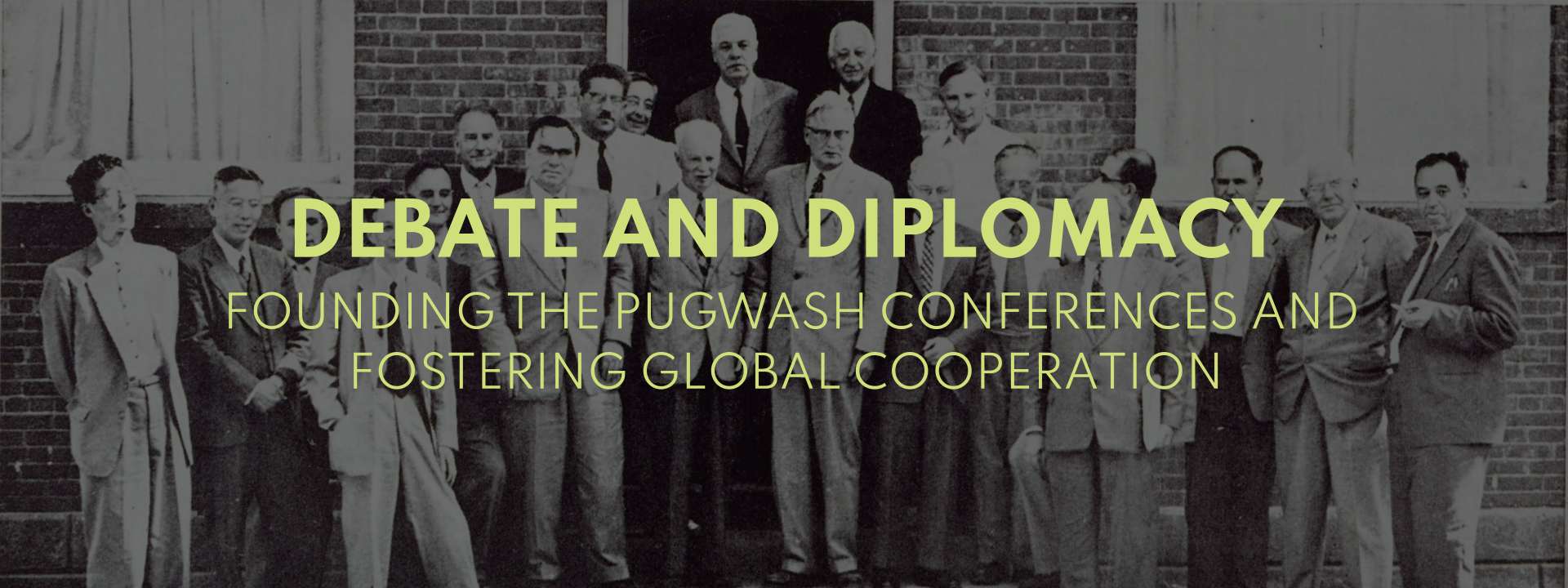
CREATION OF THE PUGWASH CONFERENCES
In July of 1957, scientists from ten countries, including the United States, the Soviet Union, and Japan, congregated in a small village in Pugwash, Nova Scotia, to debate the existence of nuclear weapons.
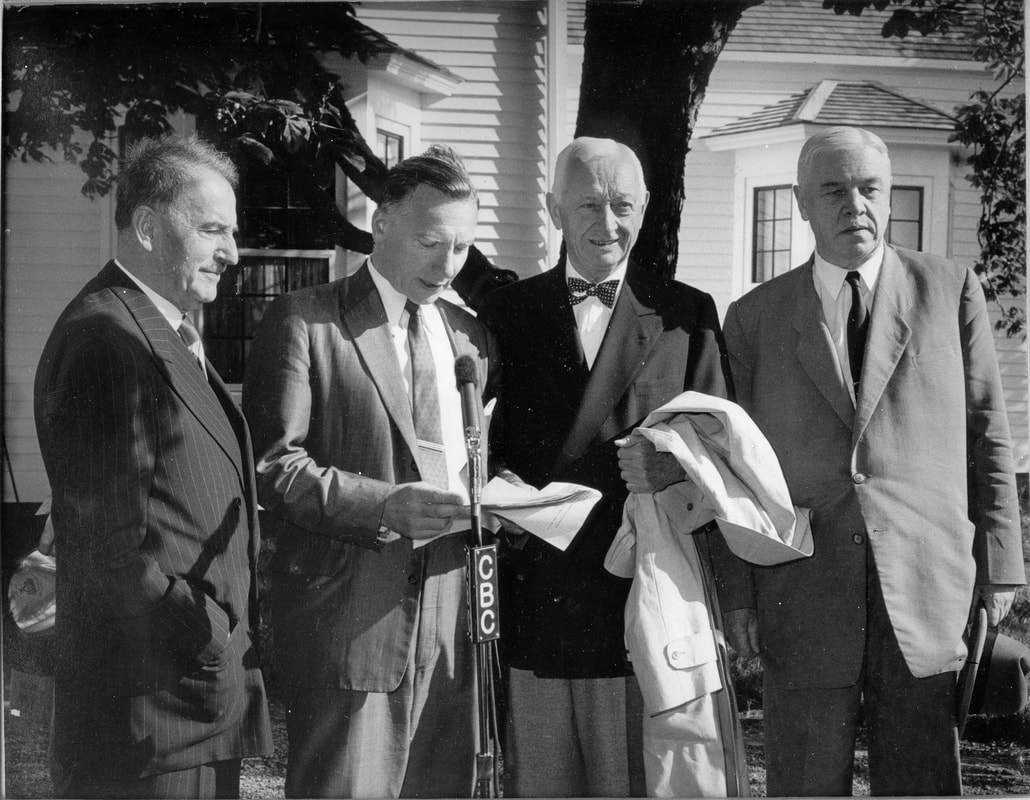
JOSEPH ROTBLAT AT THE FIRST PUGWASH CONFERNCE, JULY 1957. COURTESY OF PUGWASH

PARTICIPANTS OF THE FIRST PUGWASH CONFERENCE, JULY 1957. COURTESY OF PUGWASH CONFERENCES ON SCIENCE AND WORLD AFFAIRS
Officially named the Pugwash Conferences on Science and World Affairs, this assembly of scientists, led by Bertrand Russell, was built directly upon the Russell-Einstein Manifesto and laid its message for peace as its foundation.

THE PUGWASH CONFERENCES BECAME THE COMPLETE EMBODIMENT OF THE RUSSELL-EINSTEIN MANIFESTO, ACTING AS A VESSEL OF COOPERATION AND FOSTERING A VITAL DISPLAY OF DIPLOMACY BETWEEN THE UNITED STATES AND THE SOVIET UNION.

POLITICAL INFLUENCE
By allowing scientists and diplomats of opposing nations to come together and debate senstitive issues, the Pugwash Conferences played a powerful role in the development of many anti-nuclear policies and treaties:
1963 - THE PARTIAL TEST BAN TREATY
- prohibited the testing of nuclear weapons, except in underground enclosures
- was signed by over 120 countries, including the United States and the USSR
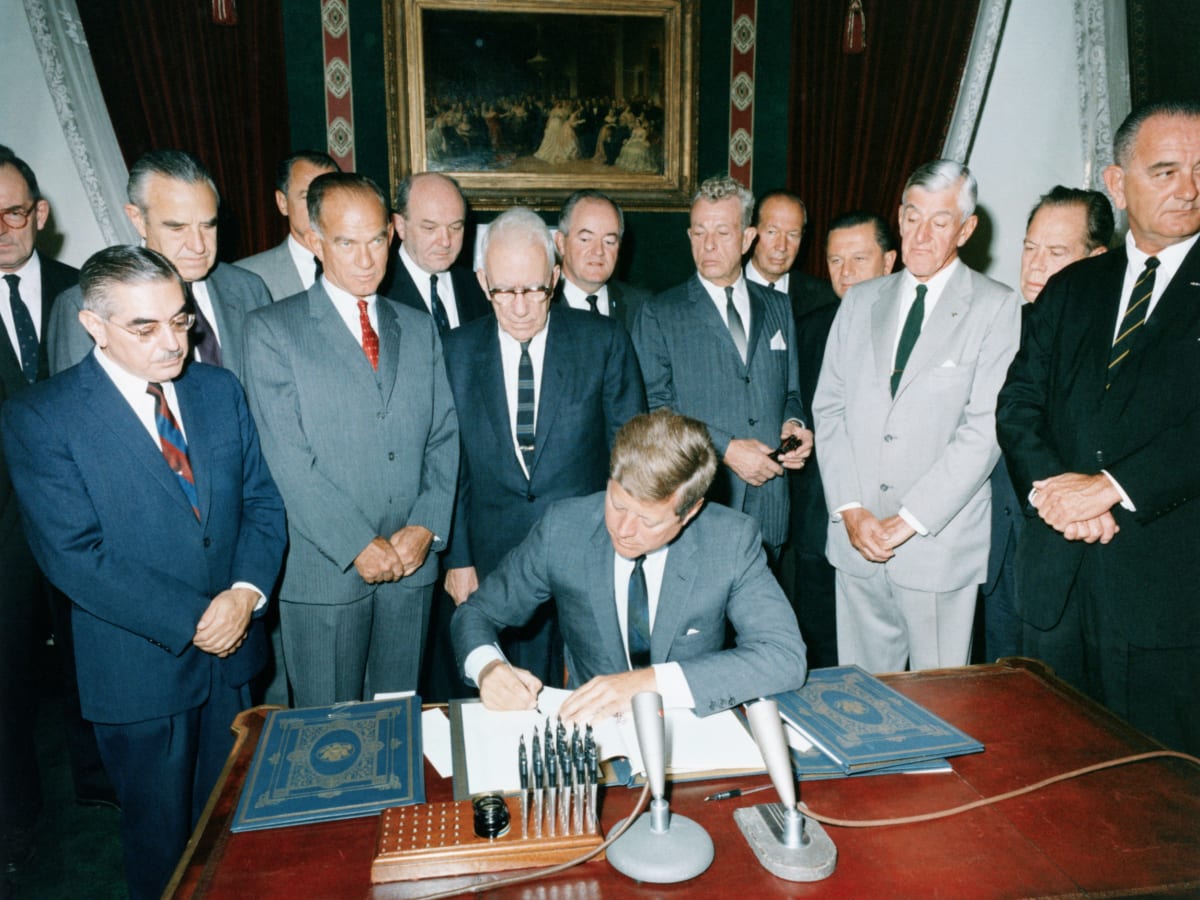
US PRESIDENT JOHN F. KENNEDY SIGNING THE PARTIAL TEST BAN TREATY, 1963. COURTESY OF THE NATIONAL SECURITY ARCHIVE
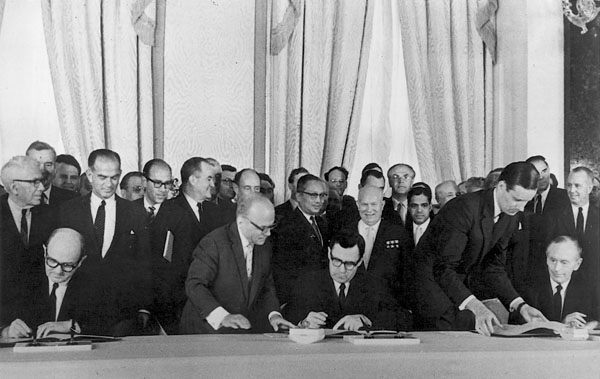
FOREIGN MINISTERS SIGN THE PARTIAL TEST BAN TREATY, 1963. COURTESY OF THE NATIONAL SECURITY ARCHIVE
1968 - THE NON-PROLIFERATION TREATY (NPT)
- primarily aims to prevent the spread of nuclear weapons
- allows for the shared benefit of peaceful nuclear technology, but not weapons
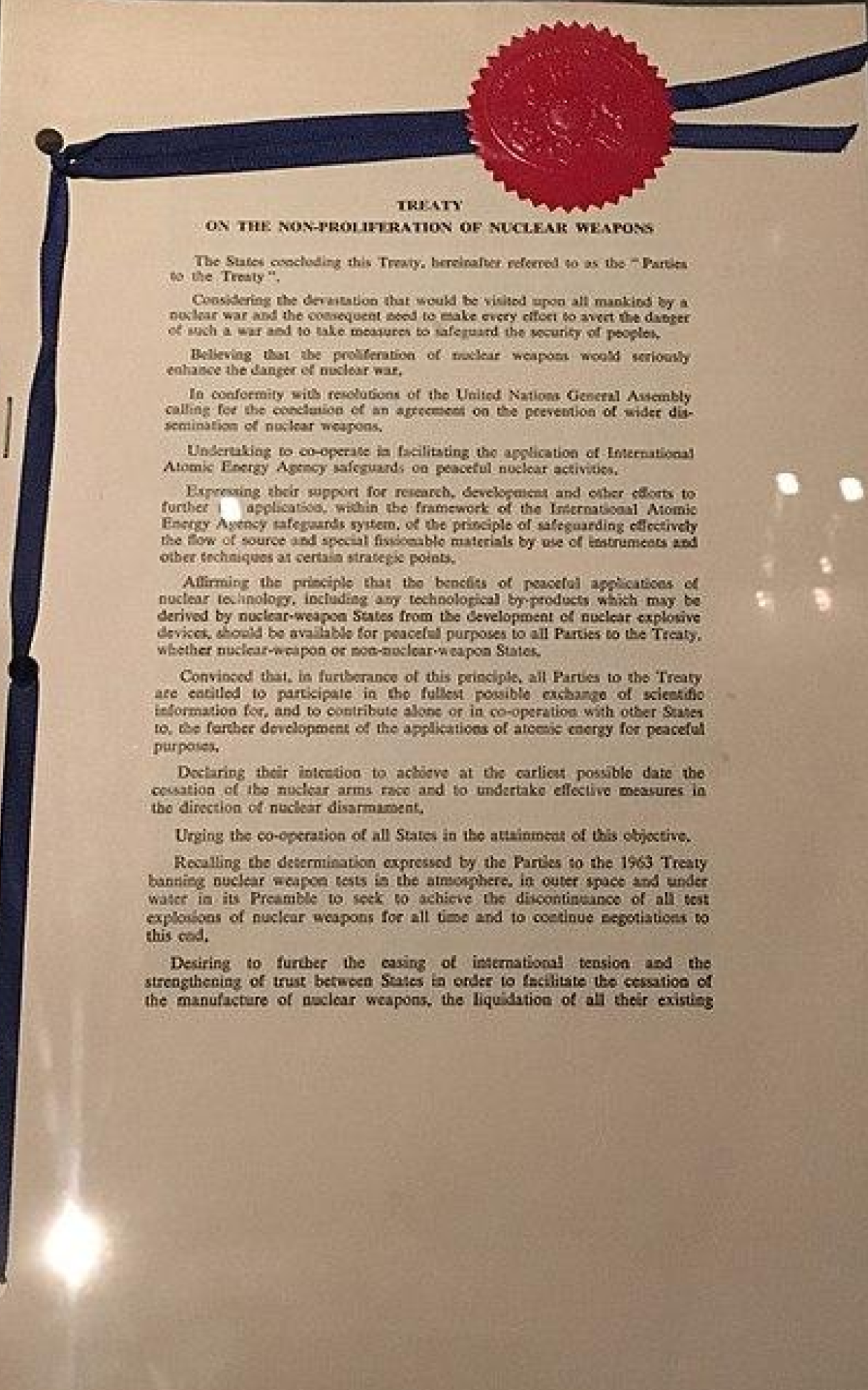
THE NON-PROLIFERATION TREATY. COURTESY OF THE BELFER CENTER
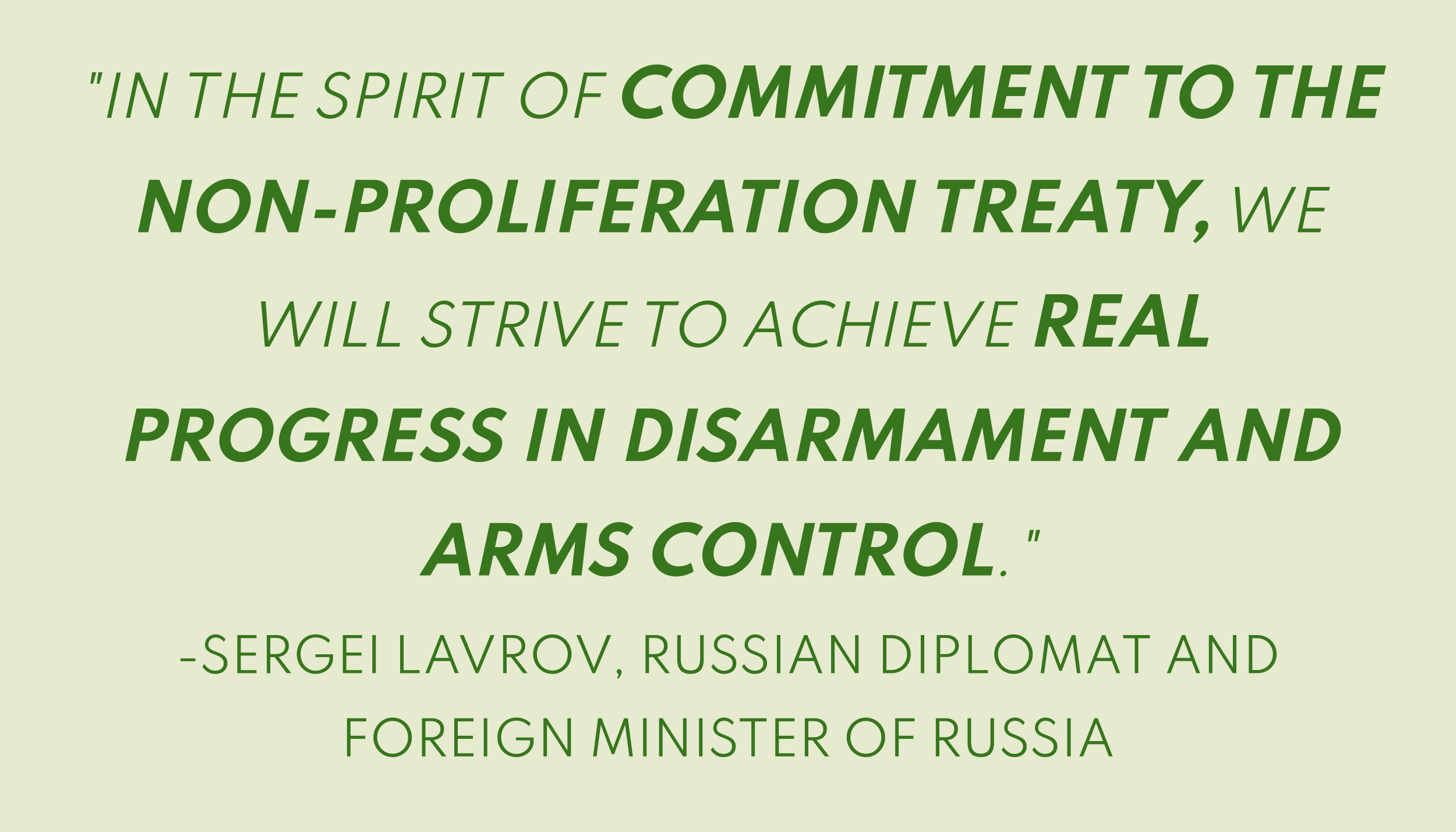
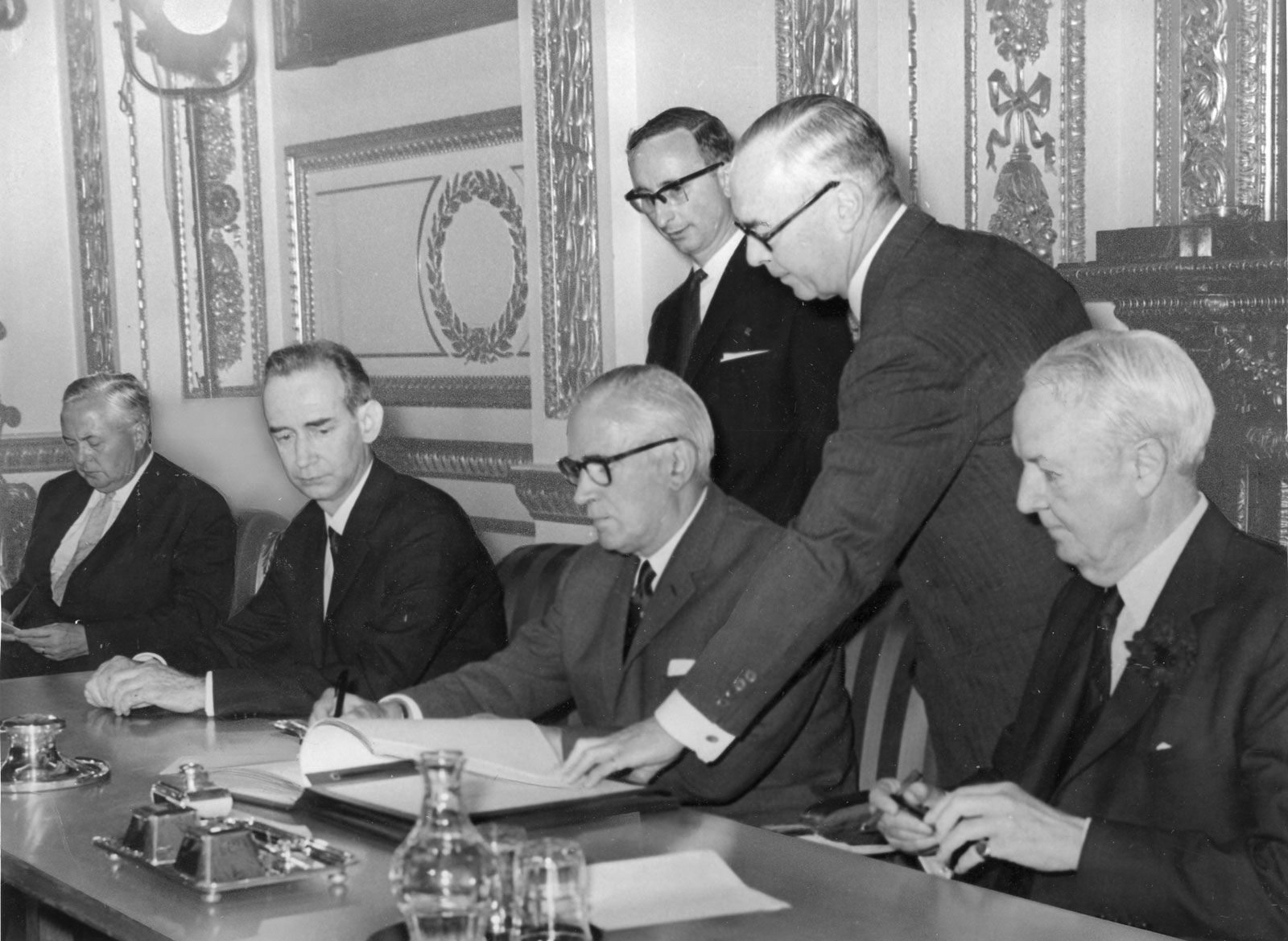
BRITISH FOREIGN SECRETARY MICHAEL STEWART SIGNING THE NON-PROLIFERATION TREATY, 1968. COURTESY OF BRITANNICA
1972 - THE ANTI-BALLISTIC MISSILE TREATY (ABM)
- agreement between the United States and USSR to limit defense systems against incoming ballistic missiles
- reasoned that the mutual limitation of defensive systems would reduce the need for offensive measures
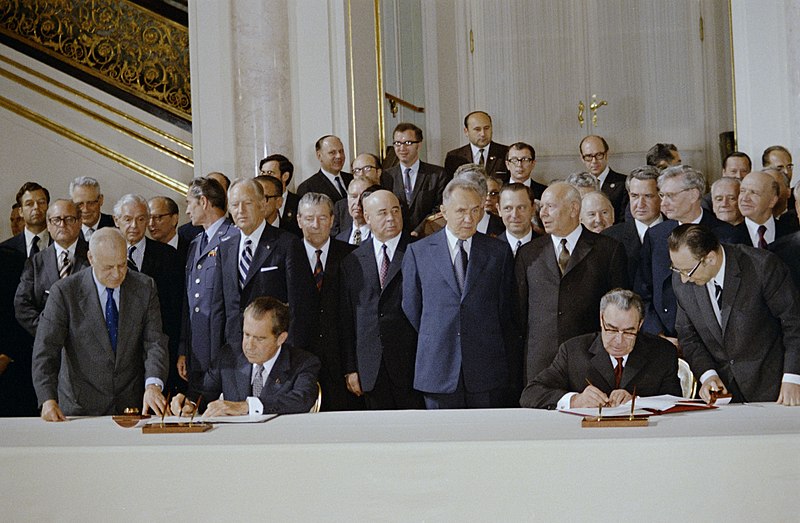
PRESIDENT NIXON AND USSR REPRESENTATIVE BREZHNEV SIGN THE ABM, 1972. COURTESY OF THE NIXON LIBRARY
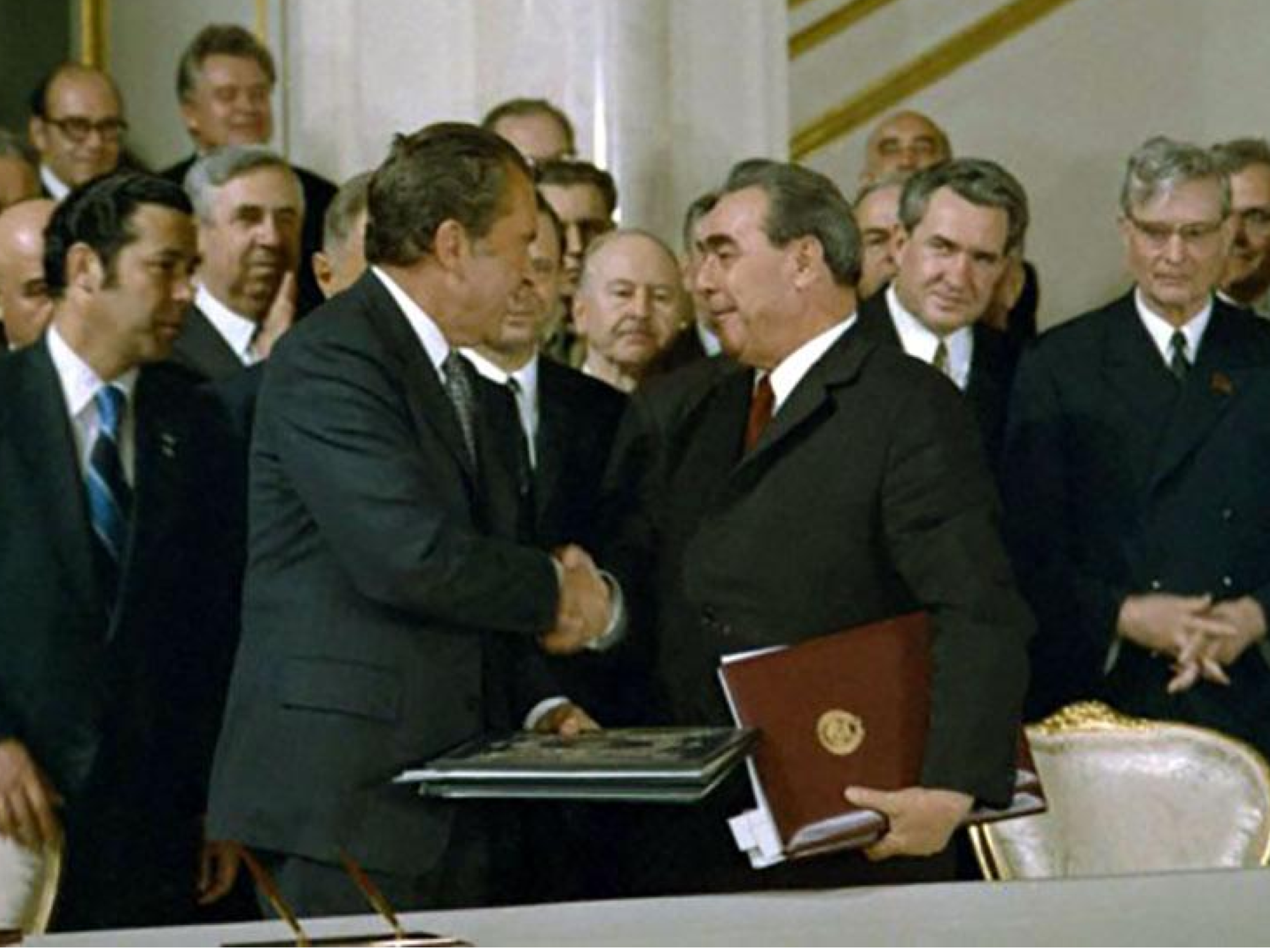
NIXON AND BREZHNEV EXCHANGE A HANDSHAKE DURING THE SIGNING OF THE ABM, 1972. COURTESY OF THE ATOMIC ARCHIVE
Though the Pugwash Conferences were informal and purposely disjoint from offical government activity, their ability to connect scientists from across the world had substantial impact on global policy-making.

SOVIET POLICY
The authoritative structure of Soviet government often drowned out voices of protest. However, the Russell-Einstein Manifesto was able to become a influential role in shaping the USSR's views, as its calls were heard and recognized by some of the most powerful figures of the Cold War.
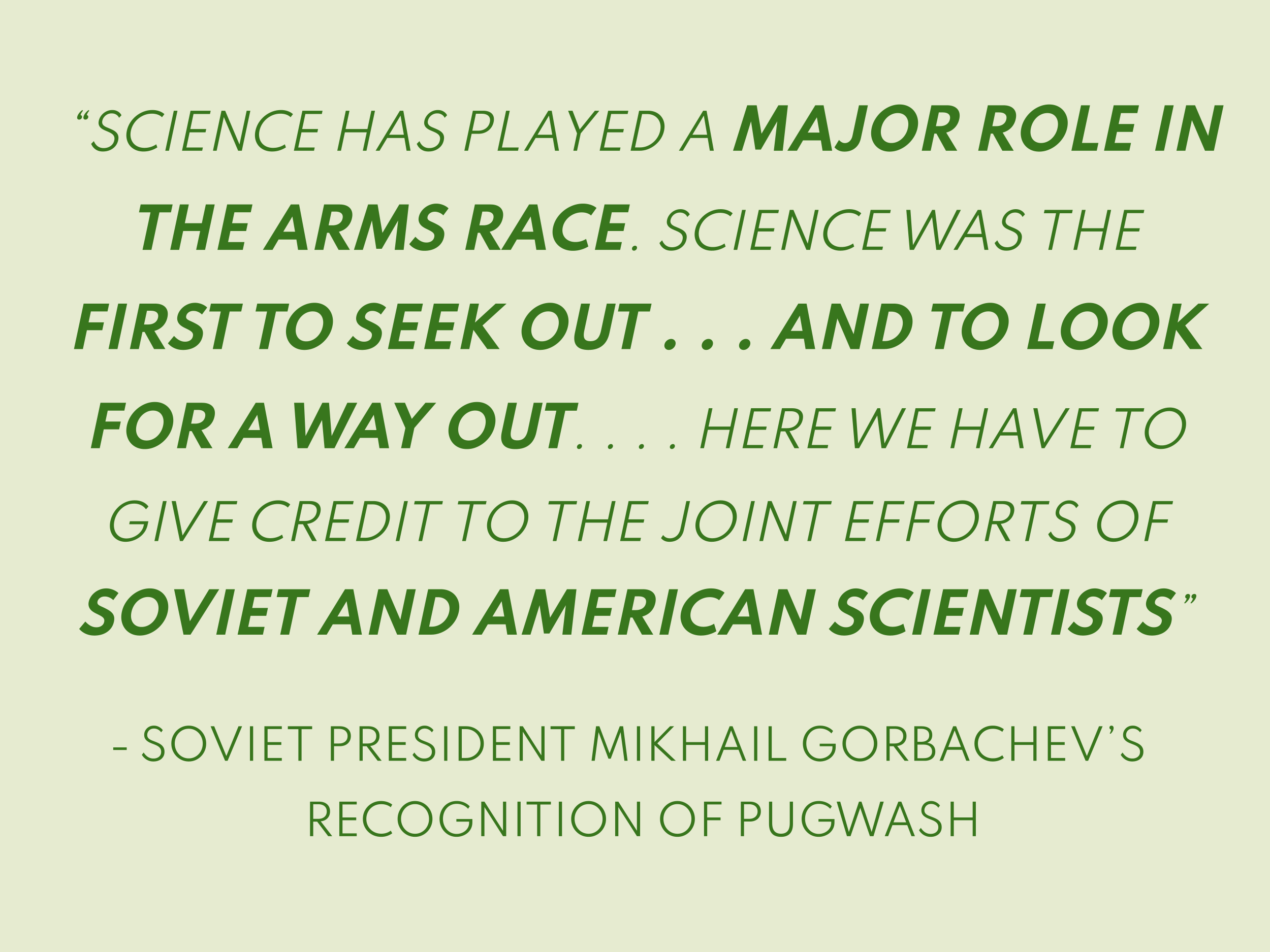
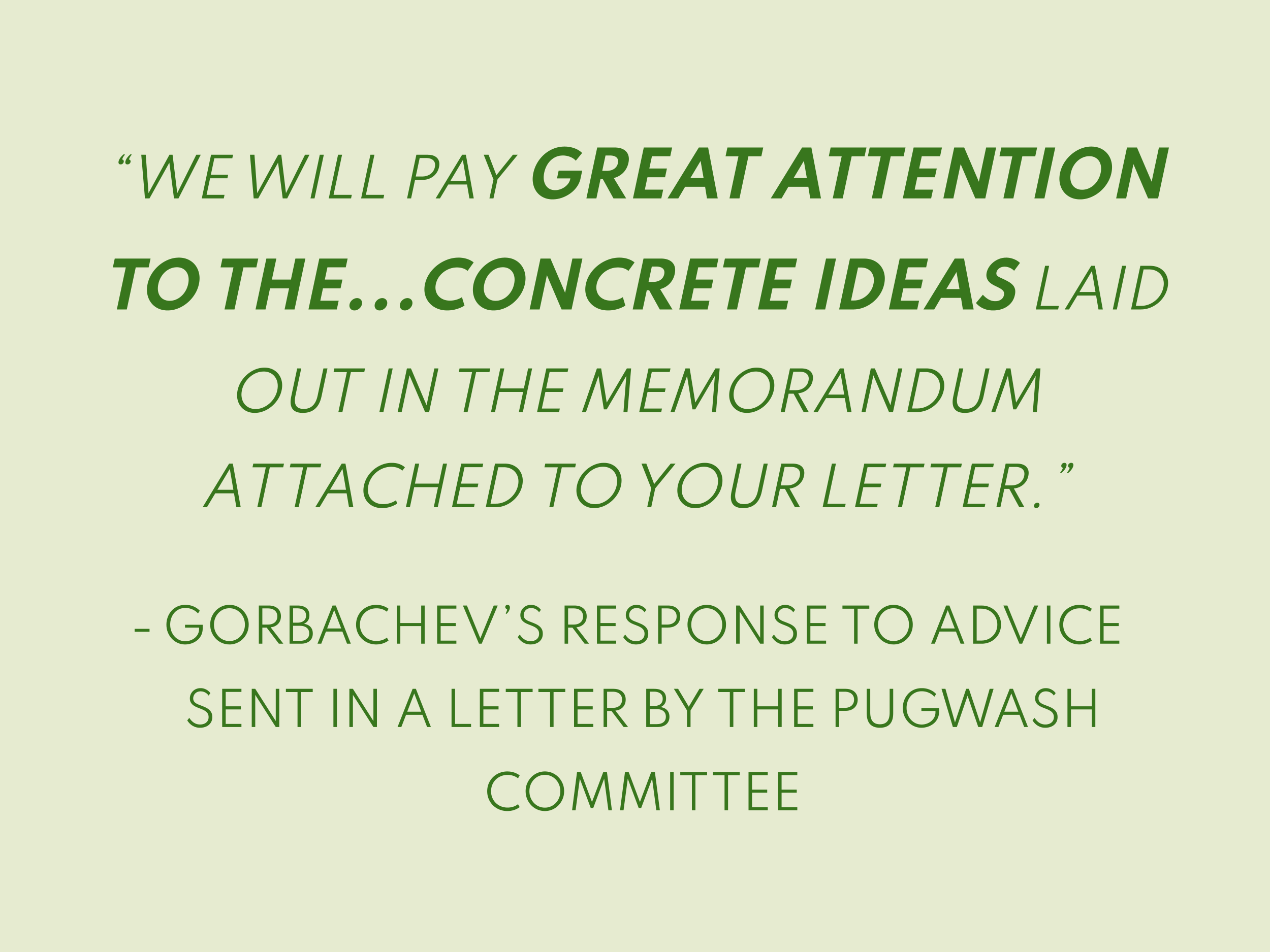


THROUGH ITS EMBODIMENT IN PUGWASH AND ITS VOICE IN INTERNATIONAL POLICY, THE RUSSELL-EINSTEIN MANIFESTO ENDURED THE PROLONGED YEARS OF THE COLD WAR AND CREATED HISTORIC EXHIBITIONS OF DIPLOMACY TO DRAW THE WORLD CLOSER TO PEACE.

THE RUSSELL-EINSTEIN MANIFESTO
NATIONAL HISTORY DAY 2022: DEBATE AND DIPLOMACY
EVAN McCRACKIN, REN GIUSTI, AND JUSTIN YANG